#Hugo Arbues
Explore tagged Tumblr posts
Text

Hugo Arbués via his IG Story.
9 notes
·
View notes
Photo
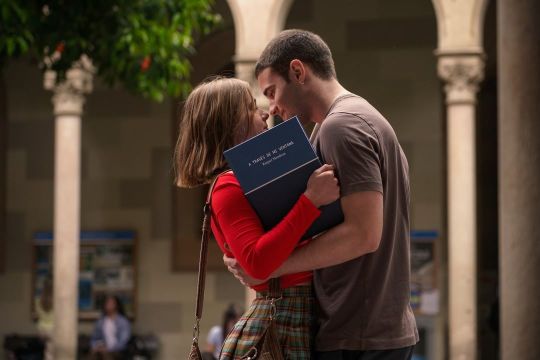


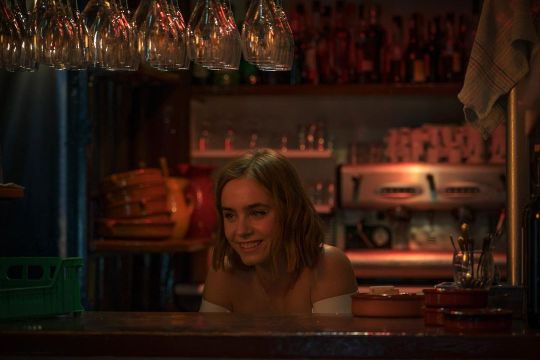

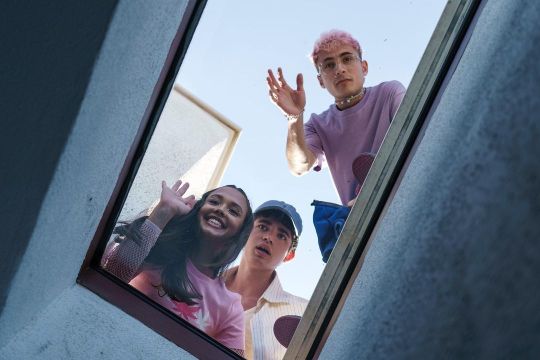


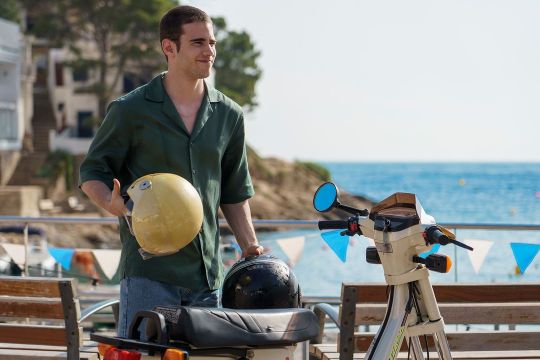
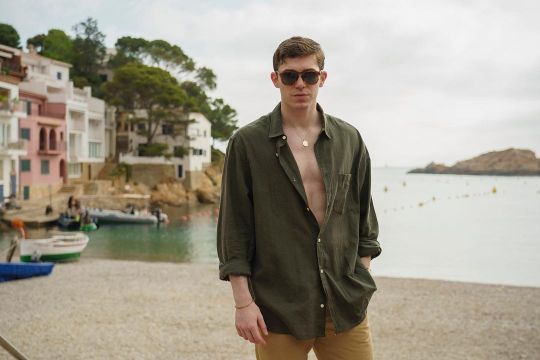
‘A través del mar’ will be released on Netflix tomorrow!! 🌊
#a través del mar#clara galle#julio peña#natalia azahara#hugo arbues#eric masip#guillermo lasheras#emilia lazo#spanish#movie#stills#amazing#cast#love them#through my window#across the sea
80 notes
·
View notes
Text

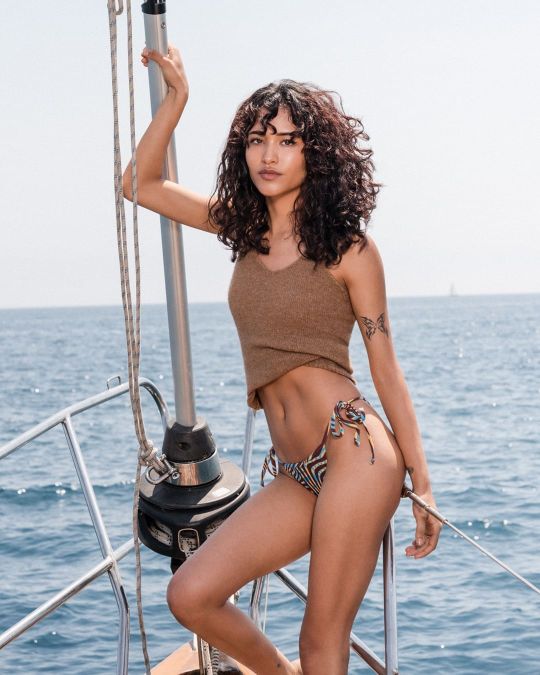
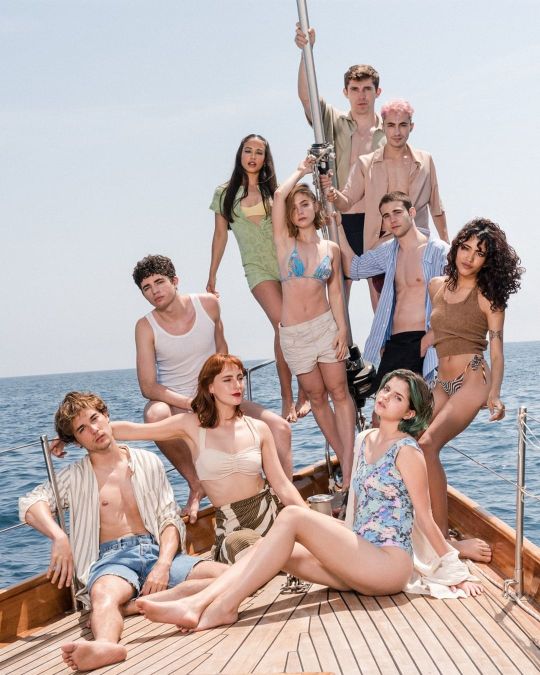
netflixlat: Sólo pido una invitación a ese barco PORFAVOOOOR 🙏🏼
Andrea Chaparro, Carla Tous, Clara Galle, Emilia lazo, Eric Masip, Guillermo Lasheras, Hugo Arbués, Ivan Lapadula Montes, Julio Peña and Natalia Azahara via netflixlat on Instagram, 07/12/2023.
#andrea chaparro#carla tous#clara galle#emilia iazo#eric masip#guillermo lasheras#hugo arbues#ivan lapadula montes#julio pena#julio pena fernandez#natalia azahara
25 notes
·
View notes
Text

— A TRAVÉS DEL MAR.
Find in GALLERY. Like or reblog the post it was useful. Your interaction shows me that I should keep making screencaps. And if you want me to post some in separate posts, tell me! ♡
#a traves del mar#a traves del mar screencaps#clara galle#clara galle screencaps#raquel screencaps#julio pena#julio pena screencaps#ares hidalgo#ares hidalgo screencaps#guillermo lasheras#guillermo lasheras screencaps#natalia azahara screencaps#hugo arbues#hugo arbues screencaps#apolo hidalgo screencaps#apolo hidalgo#screencaps#theo#screencaps of movies#movies#packs#packs for download#through my window across the sea screencaps#through my window#through my window screencaps#through my window across the sea#across the sea#across the sea screencaps#eric masip#artemis hidalgo
38 notes
·
View notes
Text
Das Deutsche Fotoinstitut in Düsseldorf – Zukunft der Fotografie sichern
Die Fotografie spielt eine zentrale Rolle in Kunst, Kultur und Wissenschaft. Doch trotz ihrer Bedeutung gibt es in Deutschland bisher kein zentrales Institut zur Erforschung, Erhaltung und Vermittlung des fotografischen Erbes. Genau hier setzt das geplante Deutsche Fotoinstitut (DFI) in Düsseldorf an. Mit Unterstützung der Landeshauptstadt Düsseldorf, des DFI e.V. und der Photographischen…
#Albert Renger-Patzsch#Andreas Gursky#art#Ausstellung#bekannter fotograf#Boris Becker#Candida Höfer#Deutsche Fotoinstitut#DFI#DFI e.V.#Diane Arbus#Duesseldorf#Eugène Atget#Fotoausstellung#Fotograf Duesseldorf#Fotografie#Fotografie Sammlung#Fotografie-Freund#Fotograph#Fotos#Hugo Erfurth#Jim Dine#Joachim Brohm#Judith Joy Ross#Karl Blossfeldt#Kunst#Kunstakademie#Kunstakademie-Duesseldorf#Landeshauptstadt Düsseldorf#Martin Rosswog
1 note
·
View note
Text
𝗧𝗵𝗲 𝗦𝗽𝗼𝗶𝗹𝗲𝗱 𝗕𝗿𝗮𝘁 𝗔𝗿𝗰𝗵𝗲𝘁𝘆𝗽𝗲

Revati being the nepo baby, expanding on the foundational wealth that was initially built from nothing from Uttarabhadrapada, to Ashwini coming from old money; it makes sense that Ketu nakshatras' roots come directly from Mercury nakshatras. No wonder I'm specifically seeing the spoiled rich brat from generational wealth theme coming up in Ketu nakshatras. And then Mercury nakshatras, as I explored in my Mercury Dominant Themes, having a responsibility of carrying and expanding the wealth and power that is passed onto them, or they have to rebuild it or prove their worth for this.
In Jyestha, being a very dry nakshatra, they usually start from nothing. And when they rise up, the accumulation tends to be too extreme and significant.

And we know that Jyestha is the billionaire nakshatra.
After Jyestha, comes Mula. And Ketu, naturally being draining of resources, can be the greedy spoiled brat. In the media, I see Ketuvians being children of billionaires or coming from old money. But the spoiled brat trope doesn't even have to come from generational wealth either. They'll be spoiled regardless.
For example, Mula Sun Cheryl Chase voices Angelica Pickles who is a spoiled brat and the cousin of Tommy Pickles and Dil Pickles who she bullies and manipulates for her own gain.

Ashwini Sun Selah Victor voices Chloé Bourgeois who is the spoiled rich daughter of Paris' former mayor, André Bourgeois.

Ashwini Moon Ashley Peldon was the speaking voice of Darla Dimple. Darla is just like Chloé Bourgeois and Angelica Pickles, in fact. She is a spoiled little demon who is extremely privileged.

And then Magha Moon Lindsay Ridgeway was the singing voice for Darla Dimple.

Mula Moon Emma Roberts plays Poppy Moore who is a spoiled American girl who comes from a very wealthy family.

Being Ketuvian, she lacks boundaries and her father basically enabled her into being a chaotic materialistic 'monster', so he sends her to boarding school in England where she finds the meaning of life.
The character Azula is voiced by Magha Sun Grey DeLisle. Azula is a very wealthy and spoiled princess. She comes from a powerful bloodline.

Magha Moon Helena Bonham Carter plays the Queen of Hearts who is a very spoiled and obstreperous character. Much like Azula, she is royalty, and if you cross her, you're good as dead. She must get things her way... or else ☠️.

Ashwini Moon Leighton Meester plays Blair Waldorf who literally comes from old money, and she is considered to be very spoiled. And power driven.

Magha Sun Blake Lively plays Serena van der Woodsen who also comes from old money. She is also considered to be spoiled.
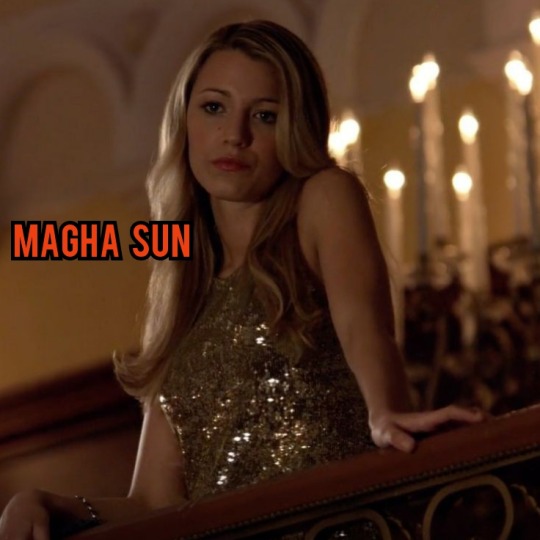
Mula Moon Victoria Pedretti plays the character Love Quinn who comes from a very wealthy and powerful family.

Mula Moon Eleanor Tomlinson plays Sylvie in the series One Day. Her character literally comes from old money.
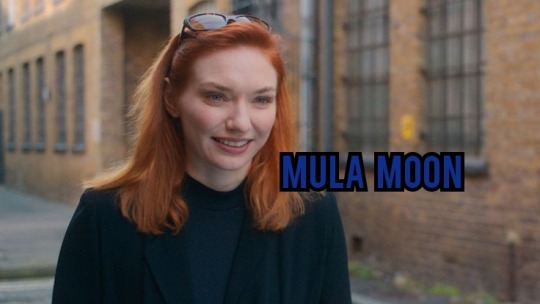
In Through My Window, the Hidalgo brothers are played by Mula Moon Julio Peña, Mula Sun Hugo Arbues, and Mula Moon Eric Masip. All three of them are heirs to an empire.

In the film Meet Joe Black, double Mula native Claire Forlani plays the daughter of a multimillionaire (who's interestingly played by Mula Moon Anthony Hopkins) who could come from old money.
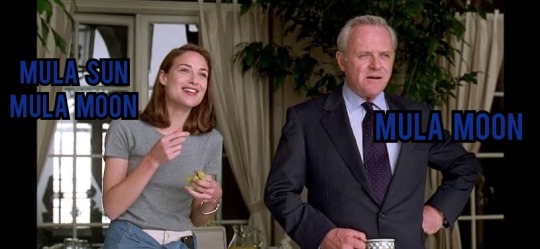
The film Soft Top Hard Shoulder is written by, and stars Ashwini Sun Peter Capaldi. His character is a struggling artist in London who comes from a very wealthy family.

Ashwini Moon Sarah Snook and Mula Sun Jeremy Armstrong both play one of the Roy siblings. Their father is a billionaire.

Ashwini Sun Phoebe Dynevor, Mula Moon Hannah Dodd and Ashwini Sun Jonathan Bailey play one of the main Bridgerton siblings who literally come from old money.

In the film Awake, Ashwini Sun Hayden Christensen plays a scion of a wealthy banking family.

Ashwini Moon Cate Blanchett plays an heiress in the film Oscar and Lucinda.

The character Patrick Bateman is played by Ashwini Moon Christian Bale. Patrick comes from extreme wealth. All he's ever known was being wealthy. Yet this life he lives suffocates him even more and he turns to sociopathic tendencies.

The character Lily Reynolds is played by Ashwini Sun Anya Taylor Joy. She literally comes from old money, and much like Patrick Bateman, she does show dissatisfaction with her life (and that's due to her step-father who she plots to murder).
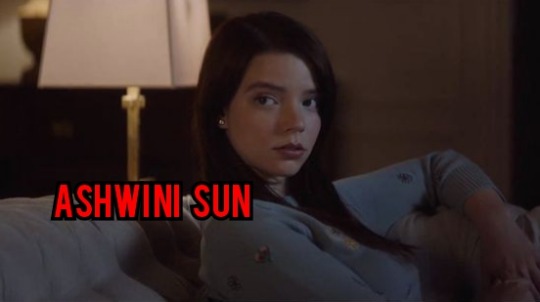
The character Rory Gilmore is also said to be spoiled as she gets everything handed to her by her wealthy grandparents. She is played by Ashwini Moon Alexis Bledel.
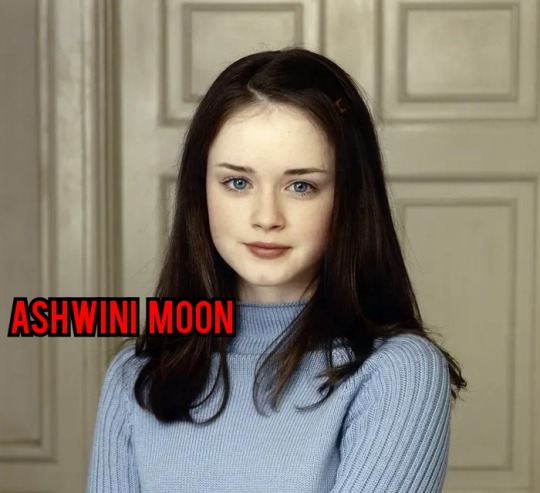
Mula Sun, Mula Moon Jodi Eichelberger voiced the character Stingy who is a possessive collector and the son of the wealthiest person in LazyTown.

Mula Moon Jaclyn Linetsky voiced the iconic spoiled brat, Caillou.

Caillou is not taught boundaries, much like the other Ketu nakshatra examples. Others are more extreme, such as Azula, Darla Dimple or even Angelica Pickles. Actually, it's very interesting that a lot of their parents end up fearing them. Or the Ketu native control them (like Chloé Bourgeois overtly controlling her father).
This also just explained why Ketu exalts in Jyestha. Jyestha puts out a lot of heat and energy, while Ketu sucks in energy. Here, Ketu is at its powerful level. This is why this placement is also seen in billionaires and indicates extreme fame.
Although, this trope can be a lot more nuanced than that, as seen in the Ashwini characters such as Lily Reynolds and Patrick Bateman. Ketu can also involve overcoming generational trauma as well, being that Ketu nakshatras deal with getting to the roots. The old money simply signifies the theme of "roots" (in Mula coming from Jyestha).
In Azula's case, she comes from a very powerful, domineering family lineage. Her ancestral roots are very sacred and symbolic to her, being Magha nakshatra. For all her life, all she's known was power (and being spoiled).

Ketu constantly pulling in energy (even to the point of destruction as it's a shadow planet), we see just how power hungry and domineering of a force she is.


Growing out of the spoiled rich brat archetype, Ketuvians also embody the golddigging archetype as well. Any archetype that has to do with draining resources. Example of this is the character Daniel Plainview from There Will Be Blood, who is an expert at extracting oil (and stealing lands), being a former silver miner and oilman.

Throughout the film, we watch as he crawls under the weight of all the wealth and resources he's accumulated and drained from others. Essentially living a life of emptiness and dissatisfaction. He's played by Ashwini Moon Daniel Day Lewis.
#vedic astrology#astrology#sidereal astrology#mula#jyestha#revati#pisces#scorpio#sagitarrius#ashwini#aries#magha#leo#ashlesha#cancer
331 notes
·
View notes
Text




Jon Snow Appreciation Month Day 5 - Bastard Identity
#game of thrones#asoiaf#valyrianscrolls#jonsnowmonth2022#bastard#the bastard of winterfell#jon snow fancast#hugo arbues#book quotes
117 notes
·
View notes
Photo









Random Actors Icons
‒ like or reblog if you save
#lorenzo zurzolo#lorenzo zurzolo icon#hugo arbues#hugo arbues icons#asante blackk#asante blackk icons#jordan elsass#jordan elsass icons#miguel herran#miguel herran icons#ncuti gatwa#ncuti gatwa icons#finn wolfhard#finn wolfhard icons#austin north#austin north icons#jack dylan grazer#jack dylan grazer icons#random actors icons#random actors#random icons#icons
54 notes
·
View notes
Text
youtube
A través de mi ventana
This YA romantic Spanish movie is really good. I liked the characters and the dynamics of the friendships and the love interests. I would have liked to see her conversation with the Hidalgos towards the end since the end felt a little rushed, but it was a good movie to watch.
#a traves de mi ventana#Spanish movie#YA romantic movie#clara galle#julio peña#guillermo lasheras#natalia azahara#hugo arbues#eric masip#Youtube
2 notes
·
View notes
Text









#hugo arbues#hugo arbues icons#apolo hidalgo icons#through my widow icons#icons#twitter icons#actor icons#male icons#filmedit
35 notes
·
View notes
Photo

El aviso (Daniel Calparsoro, 2018) Pasarela peatonal de La Paloma / La Paloma Pedestrian Bridge Madrid (Spain) Bridge over the M-30 motorway Type: truss bridge.
#el aviso#daniel calparsoro#2018#the warning#pasarela peatonal de la paloma#la paloma pedestrian bridge#madrid#spain#m-30#m-30 motorway#truss bridge#bridge#footbridge#pedestrian bridge#hugo arbues
5 notes
·
View notes
Photo
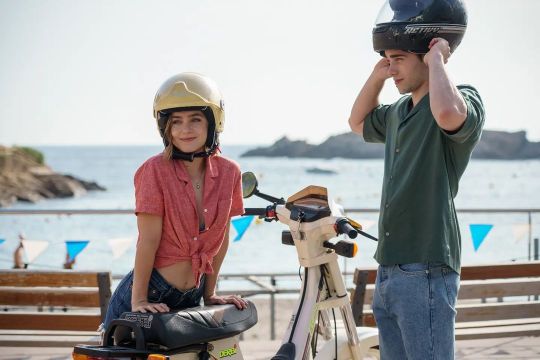
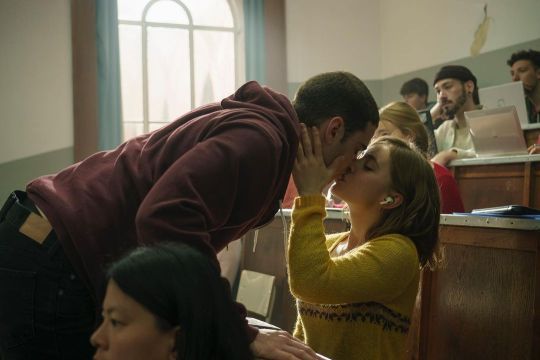
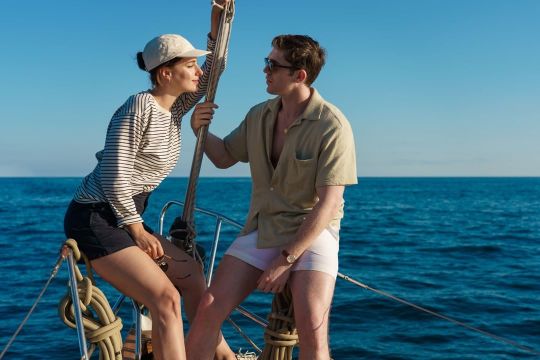
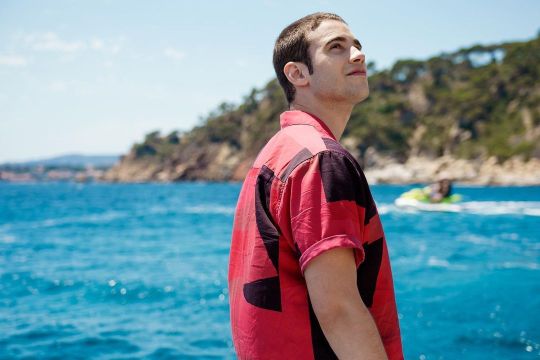






‘A través del mar’ is now available to watch on Netflix!! 🌞
#a través del mar#clara galle#julio peña#eric masip#emilia lazo#hugo arbues#natalia azahara#spanish#movie#2023#out now#netflix#stills#amazing#cast#co-stars#through my window#across the sea
42 notes
·
View notes
Text
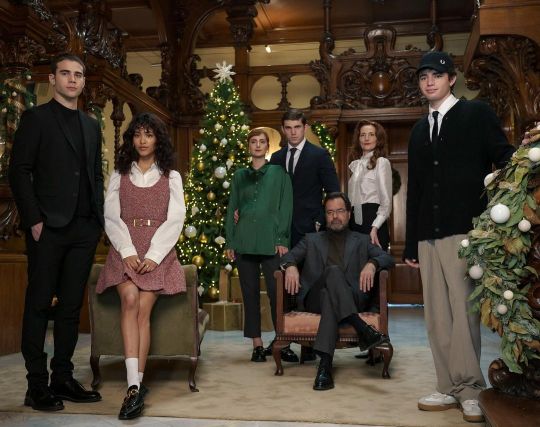
ericmasip: #ATravésDeTuMirada ya está en Netflix.
Abel Folk, Andrea Chaparro, Emilia lazo, Eric Masip, Hugo Arbues, Julio Peña Fernández and Rachel Lascar via ericmasip on Instagram, 02/23/2024.
#abel folk#andrea chaparro#emilia lazo#eric masip#hugo arbues#julio pena#julio peña fernández#rachel lascar
2 notes
·
View notes
Text
OLHO DE VIDRO > JOSÉ BASSIT

O suíço Owen Gleiberman, editor chefe da revista americana Variety, escreveu que o fotógrafo novaiorquino Garry Winogrand (1928-1984) lá pelos meados dos anos 1950 saiu com sua câmera pela ruas de Nova York e voltou com imagens que estavam tão impregnadas da vida que se desenrolava à sua frente que elas podem ter sido para o mundo da fotografia o que os filmes de Robert Altman (1925-2006) são para o cinema. "É assim que eles estavam, plenos, transbordando e vivos." Ele se referia ao excelente documentário da cineasta Sasha Walters Freyer, lançado em 2018, "Garry Winogrand: All things are Photographable."
"Todas as coisas são fotografáveis" é um complemento de uma frase de Winogrand que começava com "a fotografia é uma coisa em si mesma. E é isso do que ela trata. Todas as coisas são fotografáveis." Já em Olho de Vidro (Ed.Vento Leste, 2021) livro do paulista José Bassit, autor do excelente Imagens Fiéis (Cosac e Naify ,2003), encontramos o mesmo pensamento, e como diz o fotógrafo paulista Marcelo Greco, editor das imagens da publicação, suas imagens trazem um olhar arejado, para decodificar a excentricidade com que a cidade de São Paulo se mostra.

O livro tem o texto do escritor pernambucano Diógenes Moura e como característica uma prosa livre, célere e descritiva, como encontrado na edição 3 é 5 ( Ed.Vento Leste, 2021) publicação da paulista Dani Tranchesi (leia aqui review https://blogdojuanesteves.tumblr.com/post/659435417559547904/3-%C3%A9-5-dani-tranchesi ). "Quem de nós recolherá os resquícios da cidade, os seus dias contados, as suas noites impunes? Por dentro da cidade que morde e assopra uma fotografia já não basta..." Uma narrativa que expõe, em parte, o que acontece pela metrópole, assim como as imagens de Bassit: pessoas anônimas -não querendo ser assim- que flanam impunemente pela av. Paulista, pelas entranhas do metrô e pelo centro da cidade. Até mesmo um simulacro de outra cidade dentro de São Paulo. Será mesmo que não basta?
José Bassit teve seu olhar modificado quando, em 2016, sofreu uma cirurgia que alterou sua rotina de muitas viagens, o que o afastou de seus projetos documentais maiores como do seu primeiro livro em torno da fé do brasileiro. A recomendação médica era caminhar, depois já podia pegar um ônibus ou ir ao metrô. Foi aí que, diz ele, começou a enxergar a cidade verdadeiramente. "prestar atenção nos detalhes, na luz, na arquitetura, nas pessoas." E assim o fez com a precisão de seu olhar afiado. Olho de vidro é um livro pleno de detalhes que abdicam de tudo. A começar pela imagem da capa que sugeriu o título, uma pessoa de máscara, entre as muitas que ele encontrou pelas suas caminhadas.

Lembrando do notável parentesco que Winogrand tem com a compatriota Diane Arbus (1923-1971), uma mestra do retrato psicológico, como pensa Gleiberman, que revelava o underground da vida contemporânea, enxergamos diretamente esta similitude nas fotografia de Bassit. A estranha pessoa com a máscara anti-gás da capa faz par com a de cabeça de dinossauro, com a vestida de golfinho, a de cabeça de porco.
Não é uma busca inocente a do autor. Há uma intenção em manter seus personagens incógnitos, o que nos faz pensar que, o que é importante é a relação do indivíduo com a cidade, e claro, com o leitor. Sendo assim, a mulher de ombros largos e cintura fina, com suas asas tatuadas por todo dorso, perde sua cabeça, assim como o músico e o vendedor de bolas que se unem a mulher de capuz de tigre na noite insegura e o musculoso personagem cuja camiseta estampa uma olimpiana realista, como um metadado inserido pelo fotógrafo. São todos iguais e perfeitos nas imagens criadas pelo autor. Olho de vidro não precisava de uma leitura. Bastava uma trilha sonora, como a feita por Rogério Duprat (1932-2006) para o filme Noite Vazia (1964) do genial Walter Hugo Khouri (1929-2003).

Interessante notar igualmente que São Paulo é uma cidade hiperconservadora, como diz o editor Marcelo Greco, no entanto, ela acolhe todo mundo. Não importa se o personagem hollywoodiano no metrô cubra o rosto com a máscara e use uma capa, ou outro andar pela rua como Batman, todos são acolhidos pelo olhar que penetra a realidade. O caminho é administrado, mas não deixam de surgir surpresas ou ganchos que alcancem o leitor. Este vai demorar nos detalhes e decifrar o que vê. As pessoas se movem facilmente entre as fotos até que tudo pareça claro. É um mundo pequeno, afinal.
José Bassit assume que a cada saída que dava, procurava achar coisas inéditas. Para ele "a cidade inibe as pessoas a serem de uma certa maneira e o que eu queria era o avesso disso, o instante de liberdade de expressão em que pudessem ser o que quisessem." Por conta dessa ideia escolheu lugares especiais na cidade como a região das ruas 25 de março, cujo turbilhão de pessoas andando gerado pelo comércio é diário; a Líbero Badaró que recebe os personagens que saem do Viaduto do Chá, interligando o Largo São Bento, e como diz ele o "mundo paralelo e seguro" dentro do metrô paulistano.

O consagrado crítico de arte americano William Wilson (1935-2013) dizia, ao lembrar da fotógrafa austríaca Lisette Model (1901-1933), mestra de Arbus, que o que estiver "distorcido" na narrativa torna-se eloqüente nas fotografias. Por exemplo, uma figura fora dos padrões pode criar uma empatia ou o contrário, mas não há indiferença. Ele a comparava ao diretor de cinema e escritor francês Jean Renoir (1894-1978), quando suas imagens revelam um sentimento forte, mas independente.
Como Model, o fotógrafo brasileiro desenha discrepâncias nítidas entre performers e transeuntes. Não que ganhe também o epíteto dela como "satirista social" ou alguém politicamente engajado. Assim como a definia Wilson, em vez de ser uma "caricaturista" ela era uma "expressionista". As imagens que vemos em Olho de Vidro, retém emoções intensas, são distantes da beleza estética, e refletem o estado emocional do autor. Significa um momento raro para lidar com as ambiguidades em que nossa sociedade parece perdida diante de enormes crises, políticas, sanitárias e sociais. Um pequeno volume de 108 páginas com 22X19 cm, mas uma publicação gigante, como pouquíssimas na fotografia brasileira.

Imagens © José Bassit Texto © Juan Esteves
Infos técnicas básicas
Fotografias: José Bassit
Editora: Mônica Schalka- Vento Leste
Ediçāo: Marcelo Greco
Design: Ciro Girardi
Texto: Diógenes Moura
Tratamento de imagem: Felipe Caetano
Impressão: Stilgraf
* O livro será lançado dia 21 de outubro, às 18h no Bar do Beco, Rua Aspicuelta, 17, Vila Madalena , São Paulo.
Para adquirir: www.ventoleste.com
* nestes tempos bicudos de pandemia e irresponsabilidade política com a cultura vamos apoiar artistas, pesquisadores, editoras, gráficas e toda nossa cultura. A contribuição deles é essencial para além da nossa existência e conforto doméstico nesta quarentena *
3 notes
·
View notes
Text
Dope, Dogs & Greasers
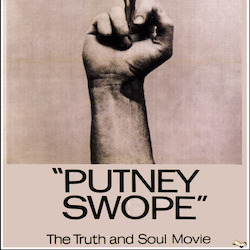
Robert Downey, Jr., delivered his first spoken line in a feature-length motion picture at the age of five. He played a puppy in Pound, written and directed by Robert Downey, Sr.
Born Robert Elias in 1935, Downey Sr. was fifteen when he dropped out of the ninth grade and used his stepfather’s surname to enlist in the army. During his time in uniform he reputedly managed to get himself thrown in the brig three times. Once was when he was stationed in Alaska, when he and a buddy, drunk at their radar scopes, faked a Soviet missile attack. By 1960 Downey was in Greenwich Village writing Off-Off Broadway plays. When he read a Village Voice column in which Jonas Mekas declared that anybody could be a filmmaker, he rented a camera and started making low-budget underground films. He hung out with Mekas and other filmmakers at the Charles Theater on Avenue B, where one night a week anyone could screen their work.
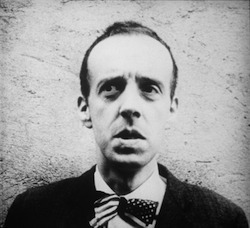
From the start he combined avant-garde technique and do-it-yourself impudence with a wacky sense of humor. In the 1964 Babo 73 he cast Taylor Mead as an addled President of the United States, with scenes shot guerrilla-style during a tour of the White House. The 1966 Chafed Elbows combines film and still photos in a way loopily reminiscent of La Jetee to tell the ludicrous tale of Walter Dinsmore, a young man who wanders aimlessly from the New School to the Hotel Dixie, a Times Square flophouse, like a Candide adrift in the Pop Art world. In one scene, a man on the street paints him with the initials AW, declares him a work of art, and escorts him at gunpoint to the Washington Square Gallery, where “you’ll be sold right away, because you’re very pretentious.” In another he records a gibberish pop song, “Hey Hey Hey,” flip side to “Yeah Yeah Yeah.” Tom O'Horgan, soon to be famous (or infamous) for Hair, did the music.
Downey fired Putney Swope, his first sort-of-commercial release, straight into the seething cauldron of American race relations in 1969. It’s a sometimes scathing, often just wacky satire in which Swope, the token black man at a failing Madison Avenue ad agency, is suddenly elected chairman. He fires the honkies and renames the firm Truth and Soul, Inc. Charmed and cowed, white clients literally throw bags of money at his Panther-style staff, who crank out ridiculous commercials for Ethereal Cereal, Face Off zit cream (“My man is out of sight, and so are his pimples”), Lucky Air Lines (male passengers get lucky with the stewardesses), and the Borman Six car. There’s a subplot involving the President of the United States, played by the dwarf Pepi Hermine, who played a similar role in an even stranger film released about the same time, Werner Herzog’s Even Dwarfs Started Small. Arnold Johnson, who would later play Hutch on Sanford and Son, plays Swope, but Downey dubbed all his lines in post-production using a gravelly pseudo-black voice; he claimed that Johnson had flubbed too many of them during filming. Mel Brooks and Allan Arbus have tiny roles as Mr. Forget It and Mr. Bad News.
Downey followed Swope with Pound, adapted from a play of his that he later said was “done Off-off-off-off Broadway at a movie house at midnight.” It’s about a bunch of stray dogs waiting to be adopted or put down, played by great character actors like Stanley Gottlieb, Don Calfa, Antonio Fargas and Charles Dierkop. A reporter for the magazine Show who spent time on the set during the filming noted a lot of pot smoking; Downey Jr., who was born in 1965 and grew up in the Village, has said that his problems with drugs go back to his childhood, when his father gave him his first puff on a joint. Junior’s first recorded line of dialogue, addressed to Lawrence Wolf, the bald actor playing a Mexican Hairless, is the immortal, “Have any hair on your balls?”
Pound was rated X for its foul language, and the United States Conference of Catholic Bishops denounced its “gross crudities played simply for irreverent and tasteless humor in a style that is more asinine than canine.” It premiered in New York City on a double bill with Fellini’s Satyricon and then vanished.
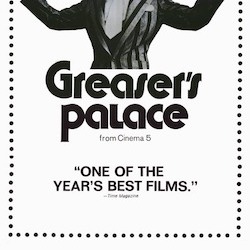
Downey followed it with the film that may be his magnum opus, the psychedelically weird Greaser’s Palace (1972). Allan Arbus plays a zoot-suited Jesus figure who drops into a Surrealist Wild West. Other characters include the eponymous Seaweedhead Greaser, his son Lamey Homo, the bearded prairie drag queen Spitunia, and a villain with possibly the most preposterous name in the history of filmmaking, Bingo Gas Station Motel Cheeseburger With A Side Of Airplane Noise And You’ll Be Gary Indiana. Reviewing it in the New York Times, Vincent Canby, who’d been a fan of Swope, panned Greaser’s Palace as “a big-budget mistake” (it cost around a million dollars) and unfavorably compared it to Alejandro Jodorowsky’s El Topo, another psychedelic Western that had preceded it by a few years, which most critics also didn’t get or like.
Meanwhile Downey was directing plays for Joe Papp’s Public Theater; when he directed David Rabe’s antiwar play Sticks and Bones for a planned CBS broadcast, the sponsors backed out at the last minute. Since then Downey has gone on to a fitful, iconoclastic Hollywood career that has included goofball stoner comedies like Rented Lips and the more seriously offbeat Hugo Pool. In recent years Mekas’ Anthology Film Archives has worked with Martin Scorsese’s Film Foundation to restore, screen and archive some of Downey’s earliest underground films, which hadn’t been seen for decades.
by John Strausbaugh
8 notes
·
View notes
